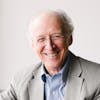The Global Twin Cities and the “Ethnoburb”
This is our new world in the Twin Cities:
- The Twin Cities’ Hispanic population more than doubled from 1990 to 2000. The Twin Cities was the eighth fastest growing Hispanic city in the United States during the 1990s.
- The Twin Cities was the 9th fastest growing Asian city in the U.S. during 1990s.
- There are 13,000 international students in the Twin Cities (10,000 college students and 3,000 high school exchange students).
- There are 200 different languages spoken by people living in the Twin Cities area.
- The light rail system in the Twin Cities sells tickets in four languages: English, Spanish, Hmong, and Somali.
- The Phillips Neighborhood [where I live] of South Minneapolis has become the most diverse single neighborhood in America with 100+ languages spoken there.
- In 2004, Minnesota ranked third in the nation of new refugees. Only behind California and Florida.
- The Twin Cities has the largest Hmong, Oromo (Ethiopian), Liberian, Karen (Burmese), Anuak (Ethiopian/Sudanese), and Somali populations in the U. S., and is home to the second largest Tibetan populations. (These statistics are from CityView, 2008 by John Mayer.)
Our church established a new campus two years ago in Burnsville, sixteen miles south of the downtown campus in Minneapolis. Most people probably thought of this as an expansion to the “suburbs.” But John Mayer of City Vision calls Burnsville an “Ethnoburb.” He describes it like this:
29% of the kids in the Burnsville School District are non-white. Two blocks from my house is a Hispanic supermarket. One mile from my house is a Somali Muslim Halal Market. My next-door neighbor is from Cambodia. Next to them is a family from Belize. My wife’s Indonesian. This is the new face of our city and our country
Watch John Mayer’s video to get the big picture.



